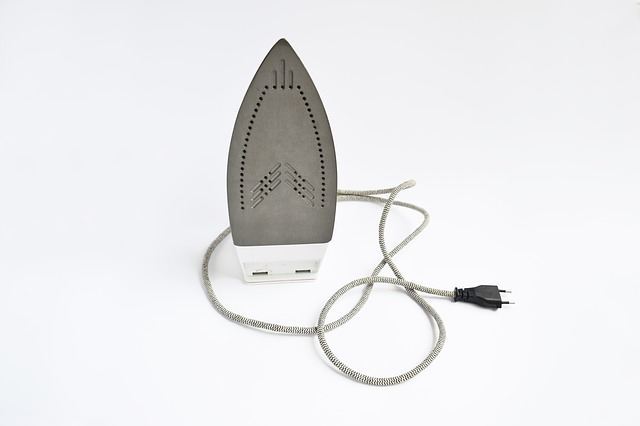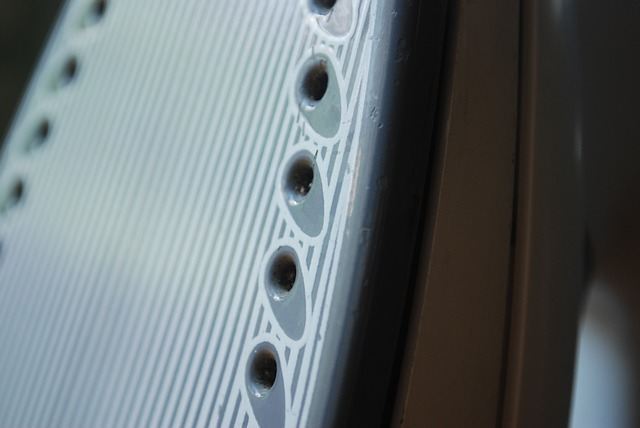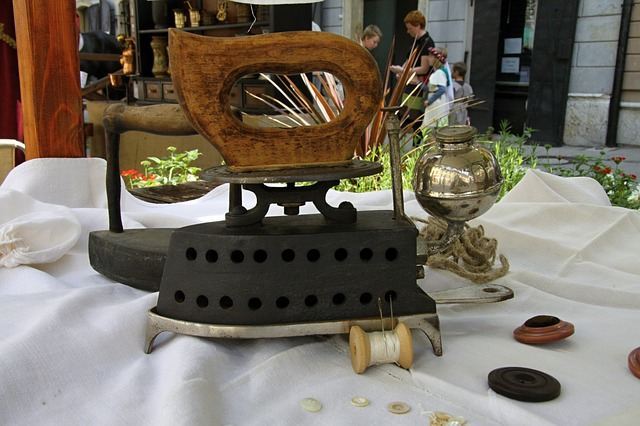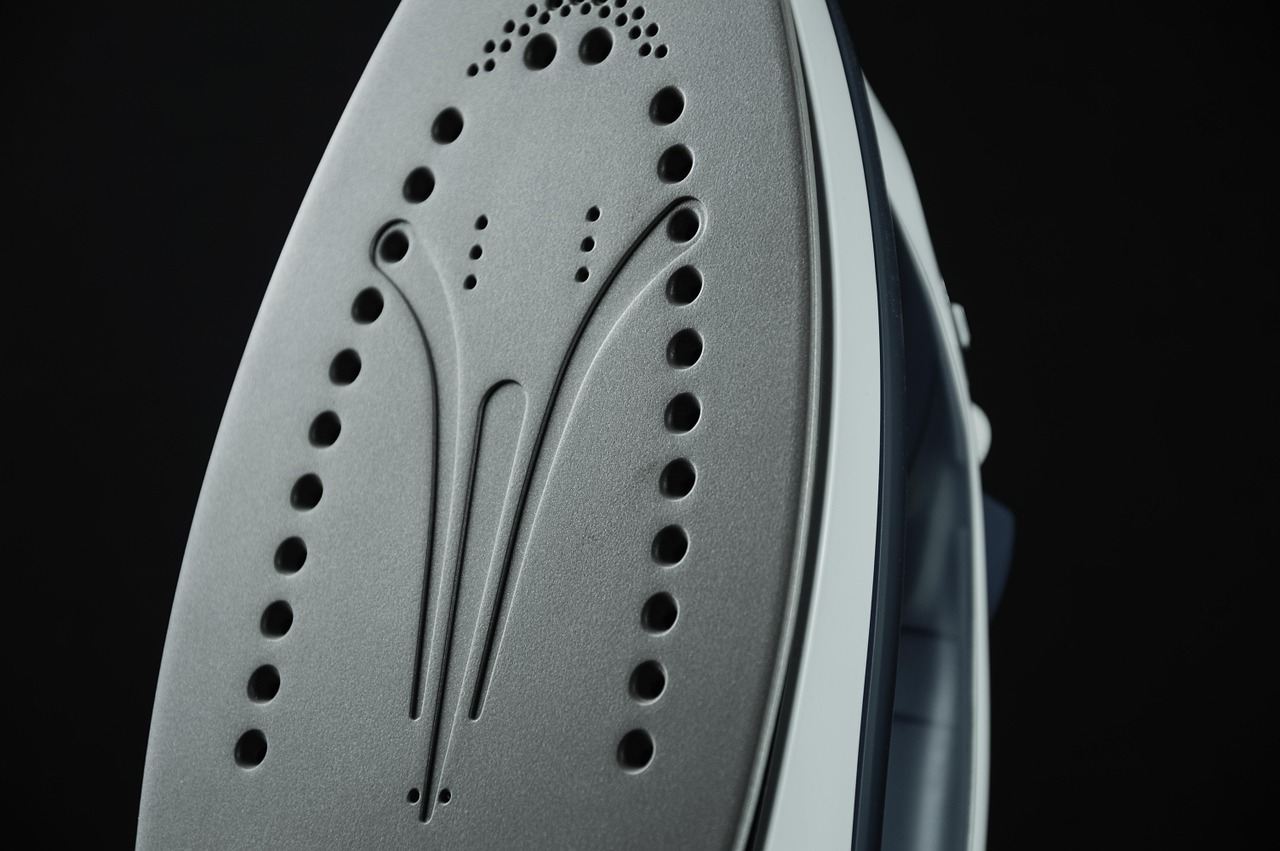The choice of iron cleaner depends on the material of the sole. At home, all coatings can be cleaned from burnt fabric. However, it’s worthwhile to apply popular advice carefully and carefully so that you don’t have to run to the store to get a new appliance.
Precautionary measures
Teflon, ceramic or stainless steel coatings must not be cleaned with a knife, sandpaper or abrasive materials. Any, even the smallest scratches will cause a more severe burning of the fabric and finally ruin the iron. Salt is also not recommended for processing soles. With constant use, it will harm even the steel surface.
The best folk remedies for cleaning carbon deposits

For each type of coating, a specific product is effective. The most suitable methods for cleaning burnt tissue are shown in the table below.
| Cleaning method | Iron coating |
|---|---|
| paraffin soda Toothpaste | metal |
| vinegar hydrogen peroxide acetone soap Toothpaste | teflon ceramics steel |
| pencil or special crayon | teflon ceramics metal |
Paraffin
Using a paraffin candle and cotton cloth, you can clean the iron at home. This method will help to remove scratches.
Instruction: wrap the candle in a cloth and rub it on the hot sole until the molten paraffin removes the burnt fabric. Use the method carefully, since the hot mass can burn your hands and get into the openings of the sole.
If paraffin flows inside, you can remove it by ironing a white sheet or unnecessary fabric in the “steam” mode.
Toothpaste and soda
Toothpaste will clean almost any surface from soot, just like sole sneaker. Please note that the abrasives contained in the composition harm the sole with constant use.
Instruction: apply toothpaste to a heated iron and grate with a brush. Rinse and wipe dry with a rag. The holes are cleaned with cotton buds.
Another effective method that is used with caution is soda.
Instruction manual: Apply a mixture of soda to water on a cooled surface. After 20 minutes, gently clean with a soft cloth.
Toothpaste and soda will remove even old soot and adhering villi. However, it will inevitably lead to scratches and microcracks. They are used only as a last resort, if other home recipes did not help get rid of the problem.
Vinegar
Use vinegar only in a well-ventilated room with open windows, because harmful fumes can cause discomfort and poisoning.
- Mix water and vinegar in a 1: 1 ratio. Moisten a soft cloth in the solution and wipe the heated iron. The sole is warm enough not to burn your hands.
- For a ceramic surface, pour a few drops of hydrogen peroxide into the liquid. This will restore the luster to the material and bleach.
- A mixture based on vinegar with lemon juice and ammonia will not leave a trace of burning. Wipe the surface of the iron with a cloth or cotton pad in the solution.
Do not forget about the holes in the sole, which are easily cleaned with cotton swabs. At home, instead of cotton buds, toothpicks dipped in vinegar are used.
Hydrogen peroxide
The hydrogen peroxide solution will cope with small contaminants. A cotton pad or cotton ball moistened with a solution will clean the surface. For more resistant soot, solid peroxide is suitable - hydroperit.
Instruction: wipe the surface of the iron with a hydroperite tablet. After cooling the material, remove the residue with a damp cloth and wipe dry.
Hydroperite tablets are used in well-ventilated rooms on a preheated iron to a maximum temperature.
Soap
An effective way to eliminate fresh burn. For old spots will not work.
- Rub the warm surface with soap and leave to cool. Then remove the dirt with a damp cloth.
- Moisten a cloth in soapy water and iron it. The holes in the sole contaminated with soot should be cleaned with a wooden stick.
After cleaning with soap, be sure to iron wet gauze so that there are no stains left.
Video instructions
Iron cleaning pencil
When buying, pay attention to what surface the pencil is intended for. Pencils or crayons for any type of sole are sold.
Instruction: warm up the device to the temperature indicated on the pencil. Then clean the dirt and wipe with a cotton rag.
During cleaning, do not press hard on the pencil, otherwise it will crumble and fall into the holes of the device.
Features of cleaning the sole of Teflon, ceramics, steel

Teflon coating
Teflon has non-stick properties, so cleaning such a coating is easier than the rest.
- The method is effective if applied immediately, as soon as the fibers have melted or a plaque has formed. To remove a burnt cloth from the iron, soak a piece of cotton cloth and attach to nagara. Due to the temperature difference, the burn will begin to exfoliate.
- A special tool for removing carbon deposits is sold - a teflon scraper. If not, an ordinary wooden spatula will do. First, heat the appliance to maximum temperature, then carefully, avoiding heating of the blade, remove the burnt cloth.
- Ammonia is used to clean the iron in its pure form or in proportion to vinegar 50/50. Use only in well-ventilated areas. A cotton pad or dense cotton cloth is suitable for application to a contaminated surface. Before use, warm the iron to a warm state, when you can touch it with your hand.
Cleaning the iron with a special pencil after each use will prevent carbon deposits. Manufacturers recommend wiping the surface with a dry cotton cloth.
Ceramic coating
The ceramic surface is fragile. Long-term use of an iron with such a sole leads to the formation of microcracks in the material, therefore, burning of fabrics is possible. For protection, take care of the appliance and avoid bumps and scratches.
Glass ceramic cleaners or microwave ovens Suitable for cleaning the iron. Instruction: Moisten a dishwashing sponge in the product, rub the sole, pour liquid onto the bag and place a cold appliance on it. After 30 minutes, wipe off the residue with a sponge so that the chemistry does not get into the holes of the iron.
After cleaning with liquid products, be sure to let the device dry and do not turn it on for 2 hours.
Steel outsole
For cleaning stainless steel, coarser exposure methods are suitable than for ceramics or teflon.
A matchbox will help remove carbon deposits from the surface of the iron. Instruction: pre-heat the device, then clean the impurities with a sulfur strip. The main thing is not to overdo it and not scratch the metal.
After using this method, wipe the sole with a soft cloth to remove excess sulfur. If dirt gets into the holes, remove it with cotton buds.
Useful Tips

Manufacturers do not recommend the use of metal-coated sponges, rough brushes, and chemical compositions with abrasive substances for cleaning.
- After each use, drain the remaining water from the steamer tank to prevent scale formation.
- Carefully choose the temperature regime for each type of fabric, and do not forget to turn off the iron after use.
It will be successful to clean the iron of burnt fabric if the material of the sole is correctly determined. For maximum effect, use several cleaning methods one at a time.










